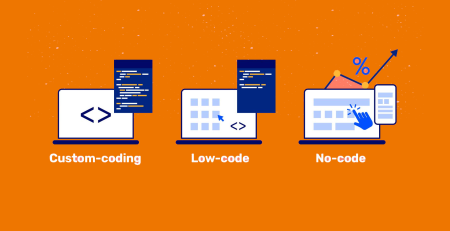How ASP.NET MVC Can Meet Your Website Development Requirements
ASP.NET MVC (Model-View-Controller) is a popular web development framework for building dynamic, data-driven web applications. It is based on the Model-View-Controller (MVC) architectural pattern, which separates an application into three main components: the model, the view, and the controller.
The model represents the data and business logic of the application. It includes classes that represent the data and the rules for manipulating and validating the data.
The view is the user interface (UI) of the application, responsible for rendering the HTML that is sent to the client’s web browser. It is designed to be easily customizable and allows developers to use templates and layout pages to ensure a consistent look and feel across the entire application.
The controller is the component that handles user input and interacts with the model to perform the necessary actions. It receives input from the user, determines the appropriate response, and then sends that response back to the user through the view.
ASP.NET MVC provides a number of benefits for web development, including:
Separation of concerns: MVC separates the UI (view) from the data (model) and the logic (controller), making it easier to manage and maintain the application.
Testability
One of the benefits of using ASP.NET MVC is its testability. Because the MVC pattern separates the different components of the application (model, view, and controller), it is easier to test each component independently. This makes it easier to ensure that the application is reliable and bug-free.
To test an ASP.NET MVC application, developers can use various tools and techniques, such as unit tests, integration tests, and functional tests.
Unit tests are used to test small, isolated units of code, such as a method in a model class. They allow developers to verify that a specific piece of code is working correctly and to catch any bugs early on in the development process.
Integration tests are used to test the interaction between different components of the application, such as the model and the controller. They allow developers to verify that the different parts of the application are working together correctly.
Functional tests are used to test the overall functionality of the application from the user’s perspective. They allow developers to simulate user actions, such as filling out a form or clicking a button, and verify that the application is responding correctly.
Overall, the testability of ASP.NET MVC makes it easier for developers to ensure that the application is reliable and of high quality.
Flexibility
ASP.NET MVC is a flexible web development framework that allows developers to customize the UI and add interactive features to their applications.
One way that ASP.NET MVC provides flexibility is by allowing developers to use any HTML or JavaScript library they choose. This means that developers can use their preferred libraries and frameworks to build the UI of their application, such as Bootstrap or AngularJS.
ASP.NET MVC also provides flexibility in terms of how developers can structure their application. It allows developers to use templates and layout pages to ensure a consistent look and feel across the entire application. Additionally, developers can use partial views to reuse UI elements, such as a header or footer, across multiple pages.
Overall, the flexibility of ASP.NET MVC makes it a versatile framework that can be used to build a wide range of web applications.
Scalability
ASP.NET MVC is designed to handle high traffic and can be easily scaled to meet the needs of a growing business. There are a number of ways that ASP.NET MVC can be scaled to support an increasing number of users and requests:
- Load balancing: By using a load balancer, multiple web servers can be used to distribute the load across multiple servers, improving performance and scalability.
- Caching: ASP.NET MVC provides built-in support for caching, which allows frequently used data to be stored in memory for faster access. This can help reduce the load on the server and improve performance.
- Asynchronous programming: ASP.NET MVC supports asynchronous programming, which allows long-running tasks to be performed in the background, freeing up the main thread to handle other requests. This can help improve the scalability of the application.
- Database optimization: Proper database design and optimization can help improve the performance and scalability of an ASP.NET MVC application. This may include techniques such as indexing, denormalization, and sharding.
Overall, ASP.NET MVC is a powerful and flexible web development framework that can meet the requirements of many different types of web applications.













Leave a Reply